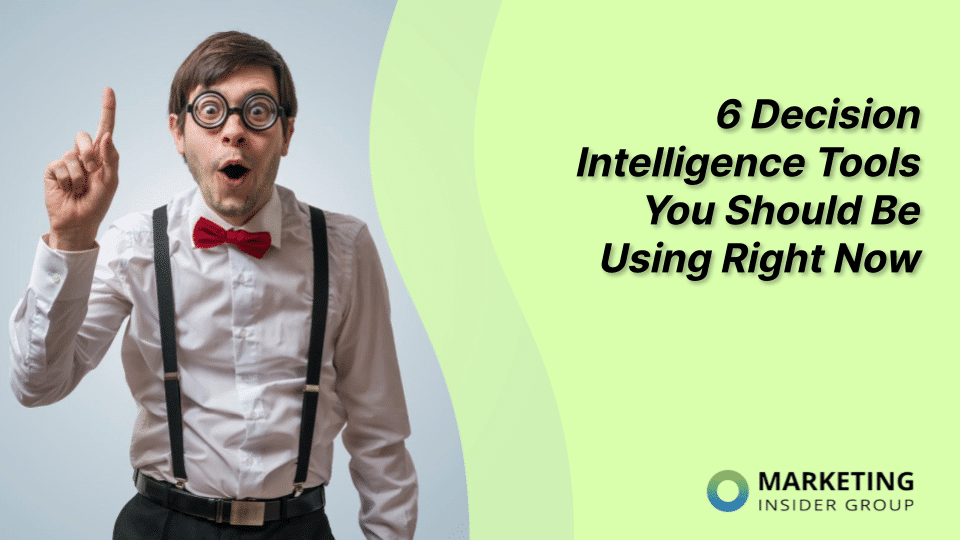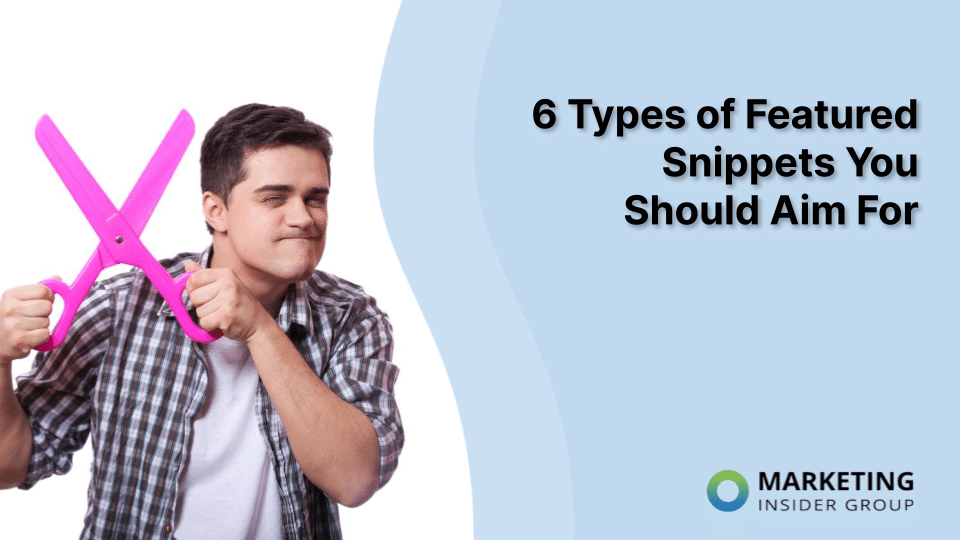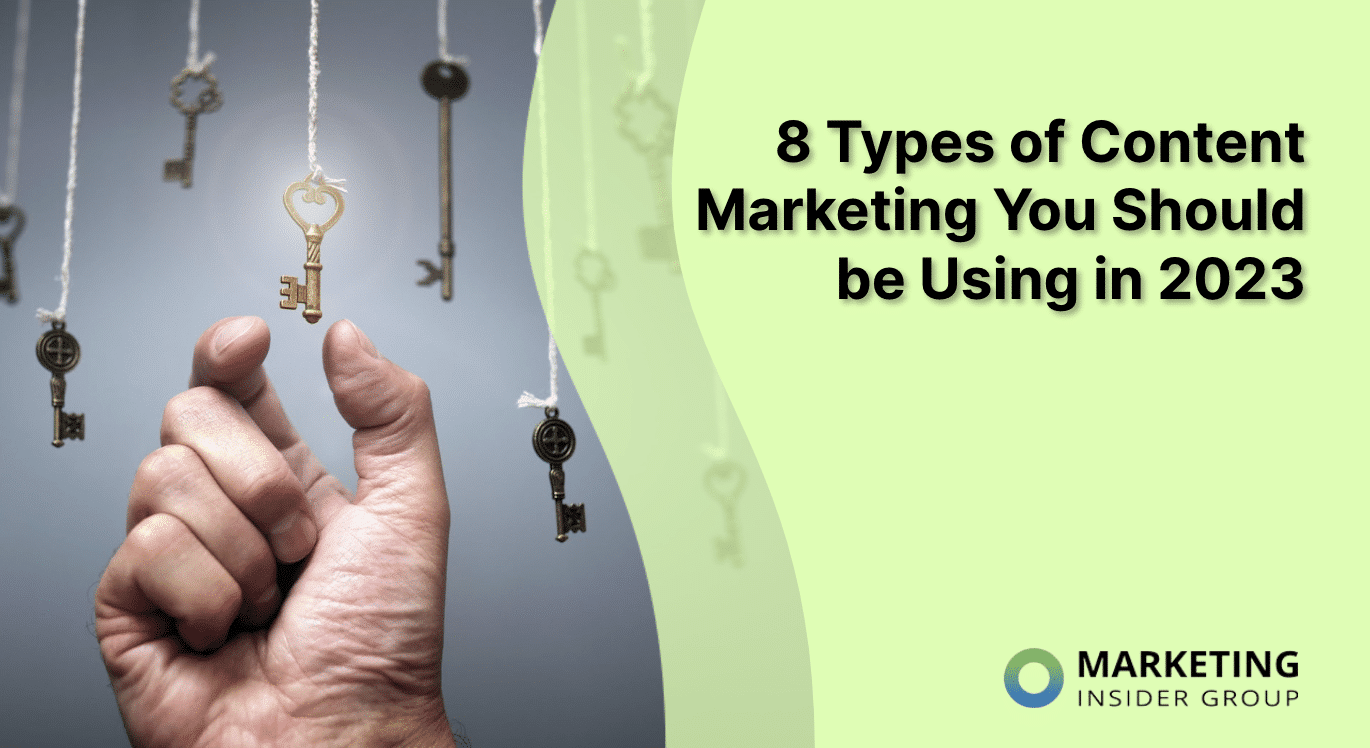
8 Types of Content Marketing You Should be Using in 2024
Are you using different types of content marketing to execute your strategy?
If not, it’s time to start. Maintaining a diverse content library boosts the overall ROI you’ll earn on your content. Plus, it makes you more competitive in a crowded online content landscape — HubSpot found at least 7 types of content commonly used by brands in 2021.
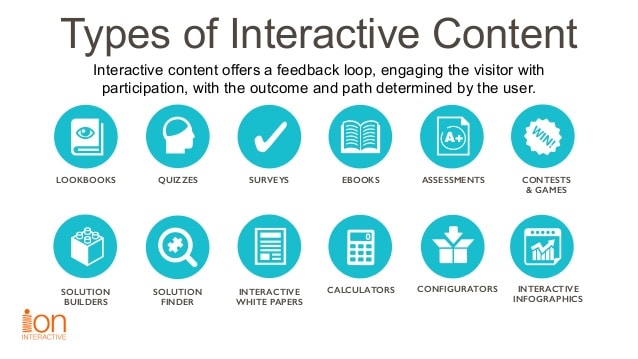
Image Source: HubSpot
In the sections that follow, we’ll walk through these types of content and more. We’ll cover how each of them earn unique results for your brand, plus ways to execute them effectively for your business.
Quick Takeaways:
- Blogs increase indexed pages by more than 400% and earn more site visitors and views.
- Case studies are a powerful form of social proof because they demonstrate real results.
- Interactive content is a differentiator — it stands out from the massive amount of static content created by brands.
- Ebooks and whitepapers are popular types of content to use as lead magnets.
- User-generated content comes from brand advocates like customers, employees, and influencers.
Why should you use different types of content marketing?
Content marketing is all about attracting traffic to your website with engaging, high-value content. A diverse content library expands your brand reach through these efforts and aligns with different audience preferences. It enables your content to be shared across a range of channels and engage various customer segments.
It also provides a way to always share information in the most optimized way. Some examples: a large list of statistics made more digestible on a visual infographic, a client success story made more relatable through video interviews, or a blog post made more shareable with social media.
In short: when you publish different types of content, you have more opportunities to connect with your potential customers, which translates to more sales and revenue for your business. So here’s the 8 types of content you should be creating and marketing:
1. Blogs
If you’re going to choose one type of content to start with, absolutely make it your company blog. Blogs are the foundation of every good content marketing strategy. They’re a driver of organic traffic and a platform for sharing your various other types of content, too.
Some quick stats that show the huge ROI of blogging: businesses with a blog on their website have, on average, 434% more indexed pages, 55% more visitors, and 97% more inbound links than sites without a blog.
Blogs are most effective when they’re extremely active. Research has found that publishing 3-4 times per month results in 3.5X the organic traffic than blogs that publish less frequently.
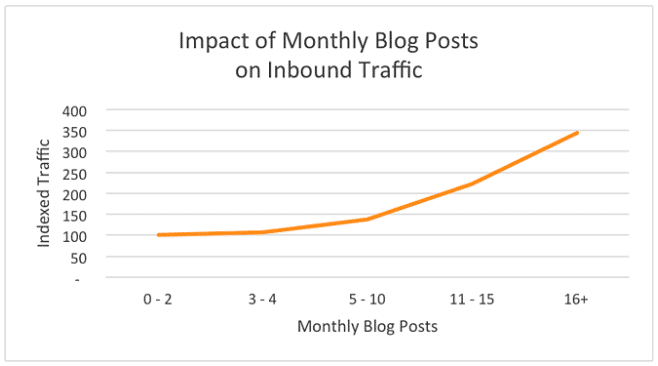
You can even capitalize on content diversification within your blog strategy with different types of blog posts. These include:
- Ultimate guides – cover your foundational topics and serve as evergreen content
- Listicles – easy-to-read (and write) posts that can cover just about any topic
- How-to posts – walk through the steps to completing a task or solving a problem
- Case studies – tell customer success stories and demonstrate brand value
- News and opinion – provide commentary on current events in your industry
For more on making your blog an effective source of organic traffic for your brand, check out our guides on setting up your company blog and writing the perfect blog post.
2. Videos
Video is emerging as the future of online content. Cisco predicts that by the end of this year, 82% of all online traffic will be made up by video. Users prefer it over other types of web content and brands use it for customer engagement across platforms — think YouTube channels, social media posts and stories, videos embedded in blogs, client interviews and more.
Brands often think that video content is beyond their content creation capabilities, but that couldn’t be further from the truth in 2022. While it’s true that some brands outsource video for professional production, many others create content in-house using smartphones and other easy-to-use technology.
Commonly used types of video content include:
- Webinars – online events around topics that demonstrate brand expertise and feature company leaders
- Vlogs and social media stories – more casual types of video content that provide a behind-the-scenes look at a brand
- Customer interviews – showcase real-world customer success stories
- Product demos – walk through product features, benefits, and operating instructions
- Viral video – increase brand visibility by participating in popular online video trends
- Branded video – branded advertisements features on various platforms like your website, email, or social media pages
3. Case Studies
Qualtrics reports that 93% of customers look for online reviews or other forms of social proof before they buy a product. Case studies that tell customer success stories are a powerful way to provide this assurance for your audiences.
Not only do case studies demonstrate brand value through real-world examples, they provide testimonials directly from your actual customers to boost brand trust.
The good news: B2B research has found that 83% of customers are willing to share the positive experiences they have with brands. This means that to build a library of case studies, all you need to do is ask your happy customers if they’re willing to participate. Best practices for case study content include:
- Featuring a diverse set of customers to relate to your various customer segments
- Focusing on the problem solved or need fulfilled
- Sharing clear, measurable results in the form of numbers or statistics
- Including quotes and direct testimonials from your customer
4. Interactive Content
Interactive content stands out from the massive amount of static content that already exists online, and it gives potential customers a chance to interact with your brand directly even before they decide to make a purchase. It includes things like quizzes, polls, games, interactive maps or infographics, surveys, and calculators.
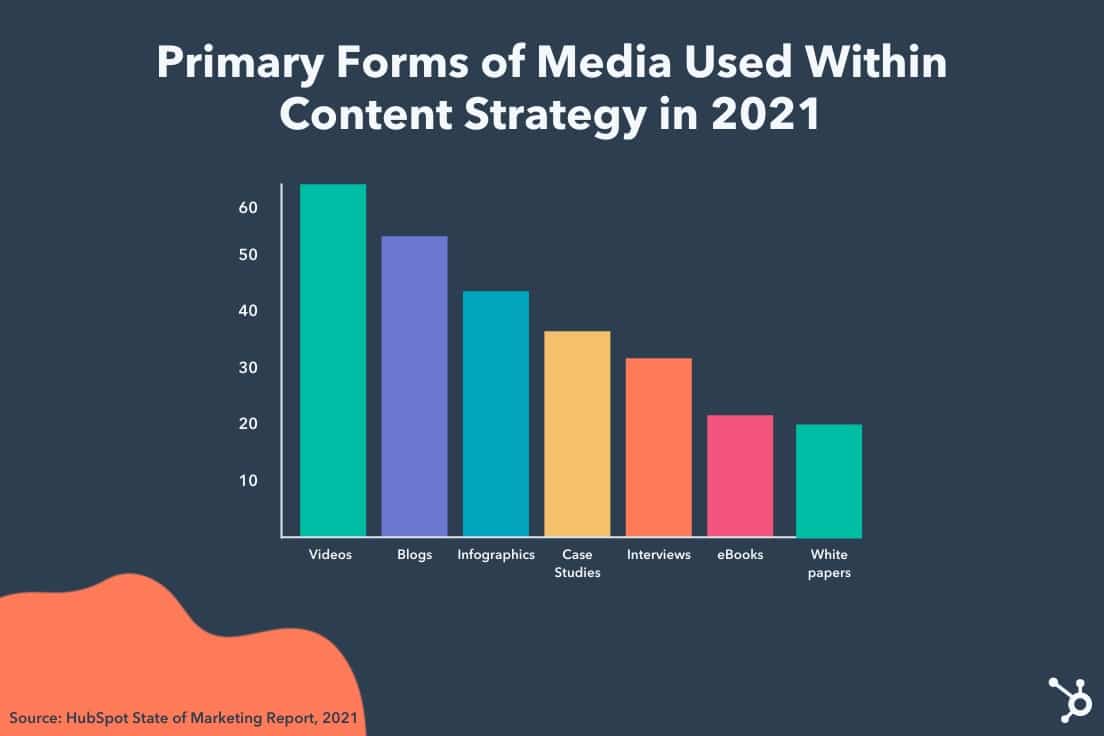
Like video, interactive content often gets an inaccurate reputation as difficult to execute when in fact it exists everywhere online. You likely engage with branded interactive content all the time without even thinking about it — i.e. voting on Twitter polls, using monthly payment calculators, completing customer feedback forms, and more.
Most CMS, social media, and email marketing platforms now have built-in tools for building interactive content without having to code or have any sort of technical experience. Smart brands are also using interactive content for lead generation (by collecting contact information) and to continually improve strategy and offerings (by analyzing the insights users share through their engagement).
5. Infographics
Infographics visually represent an information set around a particular topic. They’re especially useful for sharing a high volume of and/or complex information in a digestible format. They’re also extremely shareable — they’re shared 3X more than any other type of content on social media.
Infographics may require some assistance from a graphic designer, which are easy to find on sites like Upwork and Fiverr (if you don’t have designers in-house).
6. Whitepapers and Ebooks
Ebooks and whitepapers are similar types of content — both are developed to showcase brand expertise on a topic — but have slightly different audiences. Ebooks usually cover topics in an introductory way and target more general audiences. Whitepapers, on the other hand, are more academic and in-depth. They’re aimed at audiences that already have some level of knowledge on a topic.
Ebooks and whitepapers are also used at different stages of the buyer journey — ebooks in the beginning stages, and whitepapers in the later decision-making stages.
Both of these types of content lend themselves well to be used as lead magnets, or high-value, downloadable content offered in exchange for user contact information.
Here’s a simple, actionable tutorial on creating lead magnets that convert:
7. Social Media
Social media can serve a two-fold purpose in your content strategy: first, you can create original content through posts and stories. Second, you can amplify content from other channels by sharing it on your social media platform. Social media content is powerful because it seamlessly fits into natural buyer behavior — nearly two-thirds of American adults are already on social media, and 90% of people buy from brands they follow.
8. User-Generated Content
Last but definitely not least — you can leverage the power of your audience to become brand advocates and create user-generated content (UGC). UGC comes in the form of social media posts, reviews, social media recommendations, influencer content, and more. Your employees can also be brand ambassadors by creating branded content (like blog posts) and sharing your existing content on their own professional platforms (like LinkedIn profiles).
Over to You
Ready to level up your content marketing strategy? The team of writers and SEO experts at Marketing Insider Group can deliver you optimized, ready-to-publish content every week for a year (or more!).
We can also work with your team to develop a customized content strategy that includes other types of content marketing tailored to your audience, including ebooks, video, infographics, and customer success stories.
Check out our SEO Blog Writing Service or schedule a quick consultation to get started!


